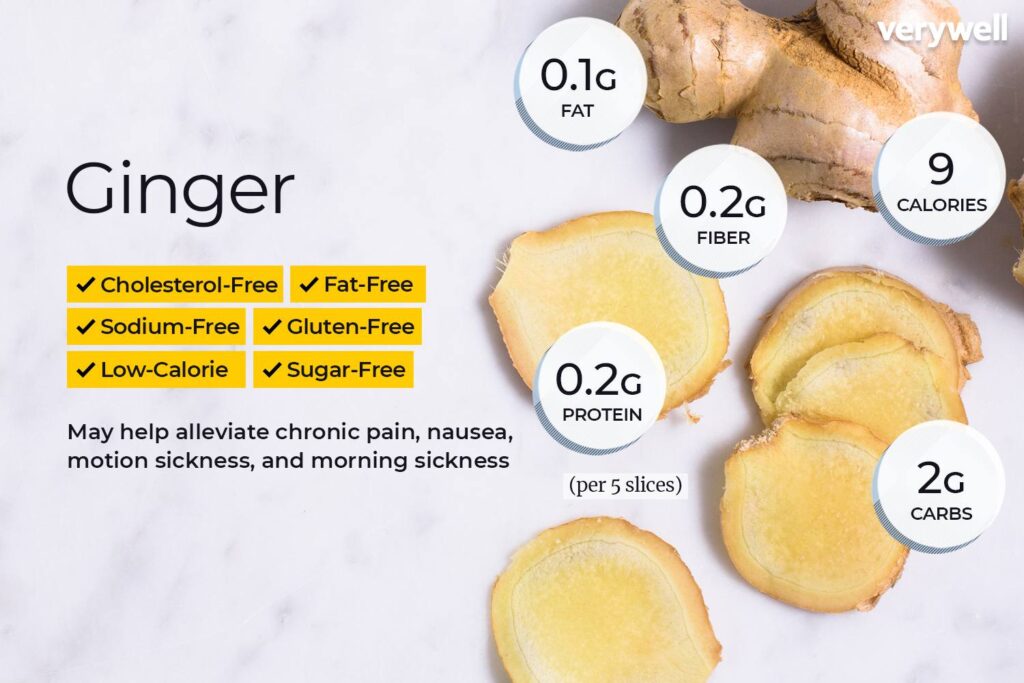Ginger is a plant that grows the best in the warm climates of China, India, and Jamaica. It has been discovered more than 2,500 years ago. Its flowers are similar to orchids. The rhizome (underground stem) of ginger has been used as a spice or flavoring agent. This plant is used for its carminative properties (digestive aid), as well as stimulant, diuretic and antiemetic qualities.
FDA generally recognizes ginger as safe (GRAS). In manufacturing ginger can be used as an ingredient added to soaps and cosmetics.
Constituents/Composition
- “Pungent” constituents, primarily gingerols and shagaols, formed from ginger during drying
- Volatile oils, including sesquiterpenes (zingiberene and b-besabolene) and monoterpenes
- Alkanes
- Aldehydes
- Sulfide derivatives
Parts Used/Pharmaceutical Designation
Rhizomes (underground stems) of the plant are used medicinally.

Clinical Pharmacology
Gingerols (some of the ginger’s active ingredients) demonstrate a number of diverse properties such as antipyretic, analgesic, antitussive, cardiotonic, and sedative activities. This herb also possesses hypoglycemic and positive cardiac inotropic activities. Ginger can help to improve appetite and digestion, increase bile and reduce gastric secretions. Ginger can stimulate vasomotor and respiratory centers. This is partially the reason for ginger’s usefulness in treatment of disequilibrium.
Medicinal Uses/Indications
- Antinauseant (e.g. motion sickness, morning sickness, chemotherapy, indigestion, postoperative nausea and vomiting-PONV)
- Carminative (prevents intestinal gas)
- Cardiotonic (improves cardiac output)
- Anti-inflammatory
- Anthelmintic, fungicidal, antibacterial
Dosage and Administration
Two hundred fifty milligrams to one gram of dried, powdered root are given three times daily as needed for nausea, or one gram of fresh ginger root, or the equivalent in extract form standardized for 5% gingerols and shogaols. For motion sickness, ginger root is taken a few days prior to travel plus each day during trip. For morning sickness, 250 mg of ginger four times daily has been used.
Adverse Reactions
- Antinauseant (e.g. motion sickness, morning sickness, chemotherapy, indigestion, postoperative nausea and vomiting-PONV)
- Carminative (prevents intestinal gas)
- Cardiotonic (improves cardiac output)
- Anti-inflammatory
- Anthelmintic, fungicidal, antibacterial
More to read: Unlocking the Secrets of Sound Sleep: The Role of CPAP Machines in Sleep Solutions

